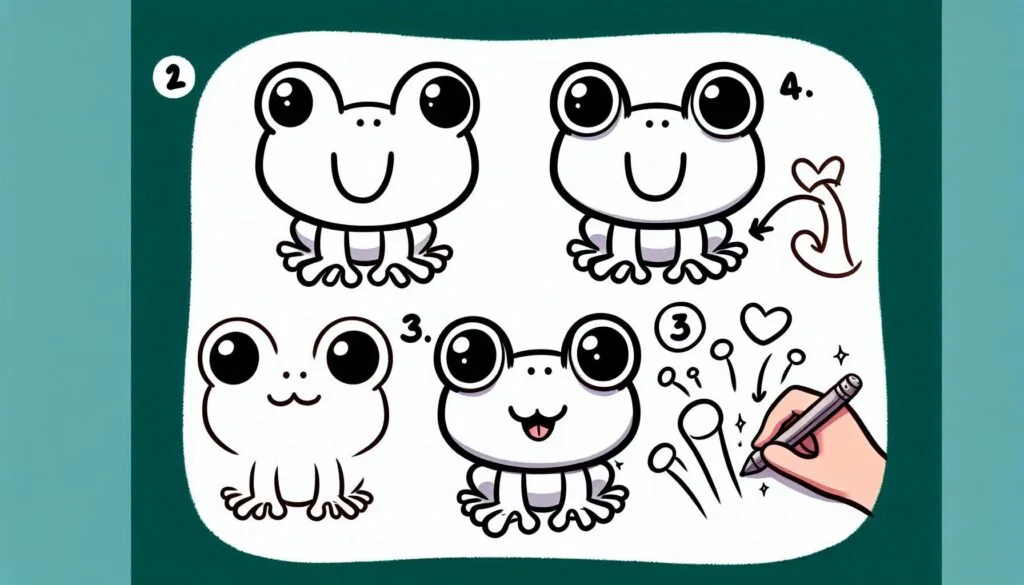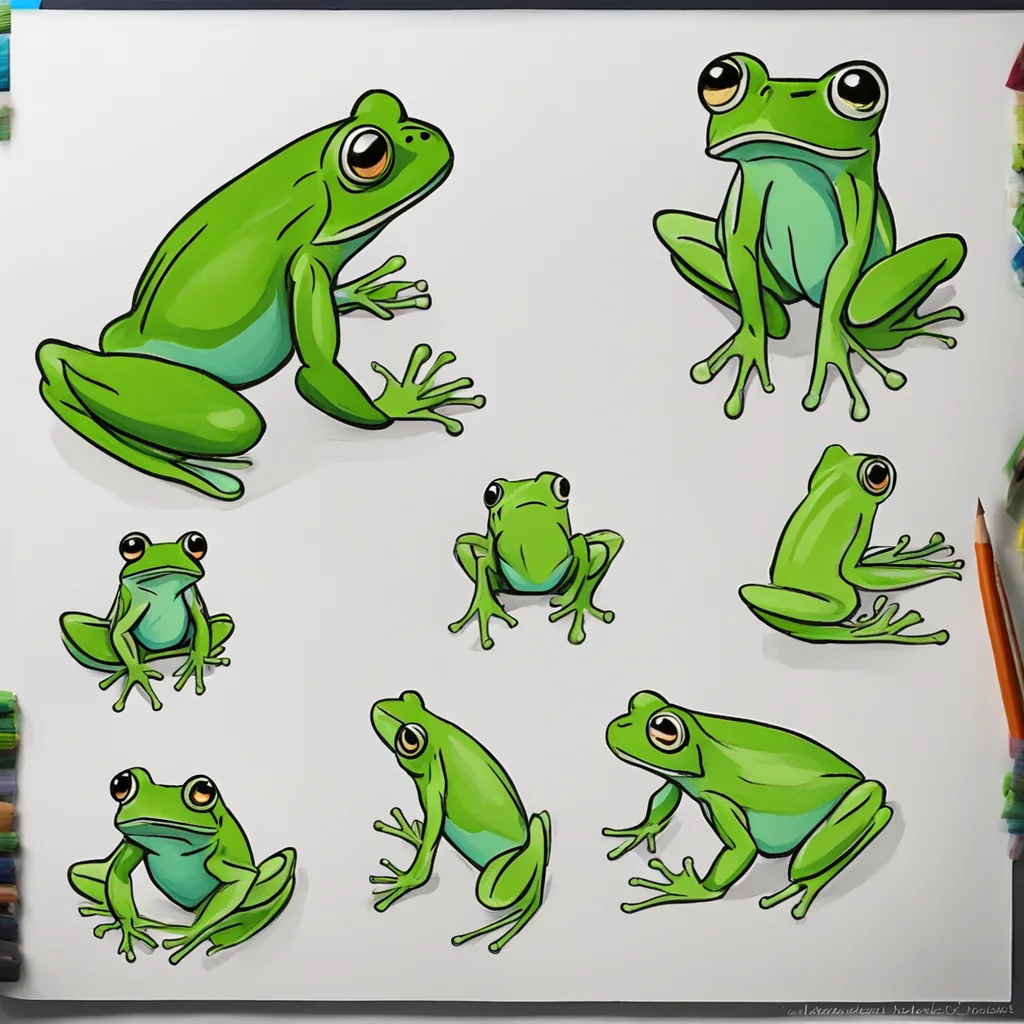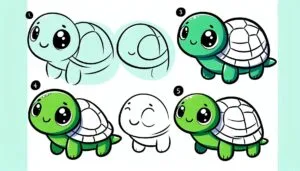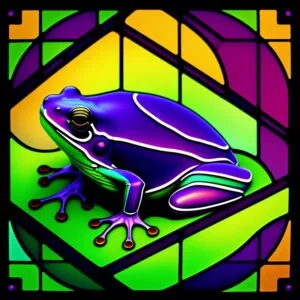Creating a frog illustration is a delightful artistic endeavor that allows you to delve into the captivating characteristics of this amphibious creature. Frogs possess unique qualities that make them an excellent choice for artistic inspiration, including their vibrant hues and distinct physical features. In this guide, we’ll take you through the process of drawing a frog, with a focus on capturing its unique features and adding artistic touches. Let’s dive into this imaginative journey!
The Fascinating Anatomy of Frogs
Frogs possess a unique and eye-catching appearance, characterized by their smooth and vibrant skin, wide mouths, and robust legs. By familiarizing yourself with their anatomy, such as their distinctively large eyes and webbed feet, you can enhance the accuracy and appeal of your drawing. By paying attention to these characteristics, you can truly grasp the captivating nature of this intriguing amphibian.
The Joy of Capturing Silky Texture and Bold Colors
Creating a frog drawing requires capturing its smooth texture and vibrant colors. This can be an exciting endeavor, improving your drawing skills and your knack for working with vibrant textures and colors. The more skillfully you capture these characteristics, the more vibrant and authentic your frog drawing will appear.
Discovering the Fascinating World of Frogs Through Art Frogs possess captivating visual features and exhibit intriguing behaviors and adaptations. Exploring the unique appearance and ecological role of frogs can be a fascinating activity. This theme highlights the educational element of art and the opportunity to explore different aspects of amphibian life through creative expression.
Steps: How to Draw a Frog
First, start by drawing the basic shape.
Begin by sketching the fundamental outline of the frog’s body. Start with a curved, slightly elongated form for the main body. Ensure that the shape of frogs accurately reflects their wide, slightly flattened body. Create a smaller, rounded shape for the head, ensuring that it slightly overlaps with the body.
Next, we can move on to adding the head and facial features.
Place the head at the front of the body. The head should have a wide and gently curved shape. Place two large, round eyes on top of the head. Frogs have eyes that are positioned higher on their heads, giving them a distinctive appearance. Create the eyes with a slightly protruding look and include small circles for the pupils. Create a wide, curved line for the mouth.
Step 3: Now let’s move on to drawing the legs.
Frogs possess impressive leg strength and agility. Begin by sketching the front legs, using two small, curved shapes that emerge from the body. Add tiny, webbed feet with four toes on each foot. Make sure to draw the hind legs with a larger and more muscular appearance, placing them further back. The hind legs should be bent, as if the frog is getting ready to leap. Consider adding webbed feet to the hind legs as well.
Step 4: Enhance the Texture
To capture the smooth texture of the frog’s skin, apply some gentle, even shading over the body. Adding gentle strokes can give frogs a textured appearance, with skin folds and slight bumps. Make sure the legs and head are clearly defined and in proportion.
Step 5: Perfecting the Form
Opt for a darker pencil or pen to carefully trace over your sketch and enhance the frog’s shape. Refine the contours of the body, head, and legs. Make sure the legs and body are clearly defined and in proper proportion. Remove any unnecessary guidelines or overlapping lines to tidy up your drawing.
Step 6: Enhance the artwork with intricate details and subtle shading.
Elevate your drawing by incorporating intricate details like the texture of the frog’s skin and delicate shading. Use gentle, flowing strokes to capture the delicate nuances of the skin and add dimension. Be mindful of the areas where shadows may appear, like under the legs and around the eyes.
Step 7: Add some color to your frog.
Now it’s time to add some vibrant hues to your frog! Opt for vibrant and lively colors such as greens, yellows, or even blues to bring life to the body of your drawing, taking into consideration the species you are depicting. Include the colorful patterns or spots that frogs often have in your coloring. Consider adding a touch of subtle shading to bring more depth and dimension to your drawing. Take note of the different areas of light and shadow in order to add more depth and realism to your frog drawing.
Topic 1: The Fascinating Physiology of Frogs
Exploring the anatomy of a frog through drawing allows you to appreciate its distinct features, such as its smooth skin, wide mouth, and powerful legs. Understanding these features enables you to craft a comprehensive and precise portrayal. Understanding the intricacies of frog anatomy can greatly improve your artistic abilities and deepen your understanding of these captivating creatures.
Theme 2: Exploring the Joy of Capturing Silky Texture and Dynamic Colors
The smooth texture and vibrant colors of a frog can provide a delightful and fulfilling challenge for artists. Mastering the art of capturing these details requires a keen sense of creativity and skill, making it an excellent exercise for working with a wide range of dynamic textures and hues. Find joy in the process of creating vibrant elements in your artwork.
Theme 3: Discovering the Fascinating World of Frogs Through Art
With their fascinating appearance and unique adaptations, frogs provide an opportunity to delve into captivating aspects of amphibian life. Exploring different colors and textures in your artwork can create visually engaging and educational pieces. This theme celebrates the excitement of exploring new facets of amphibian life through artistic expression.
In summary
Drawing a frog can be a fun and captivating activity that lets you capture the distinct characteristics and lively colors of this intriguing amphibian. By following the steps in this guide and paying close attention to its anatomy, texture, and colors, you can create a frog drawing that is both intricate and captivating. Embrace the joy of the artistic process and let your imagination soar as you bring this magnificent creature to life on paper!


Check out this super fun and simple guide to learn how to draw a tortoise with easy step-by-step instructions! This fun tutorial provides easy steps, allowing young creators to dive into their imagination while discovering fascinating reptiles!





